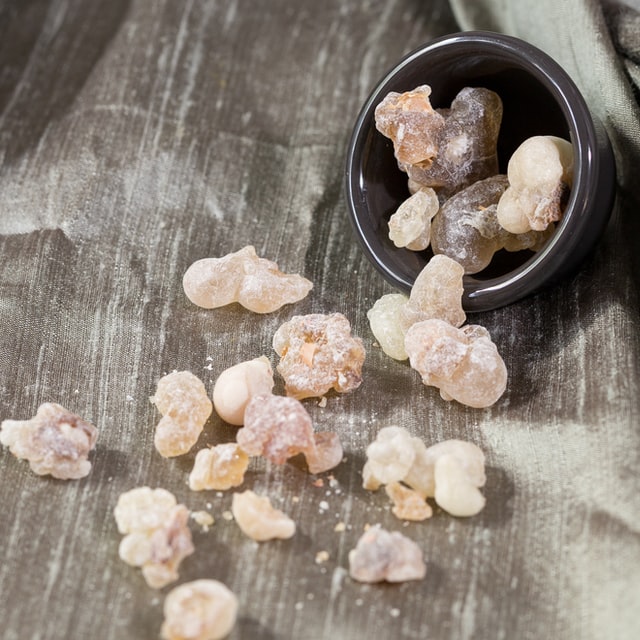For many years, frankincense was used in folk medicine recipes, and there were many ways to use it, starting with chewing, using the oil extracted from it, or burning it as incense and inhaling it, and finally drinking its infusion.
Although there are not enough scientific studies to confirm the many uses of Frankincense gum, this does not negate its many benefits.
Some of the potential benefits of drinking gum infusion on an empty stomach:
1. Possesses anti-inflammatory properties
2. Strengthens immunity
3. Helps treat cancer
4. Improves skin and skin health
5. Improving the digestive system
Boswellia sacra (Frankincense)
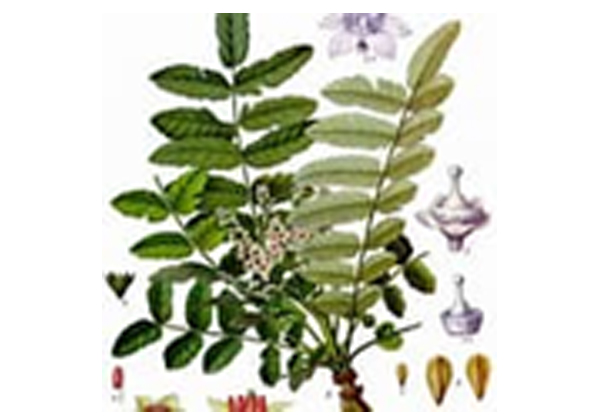
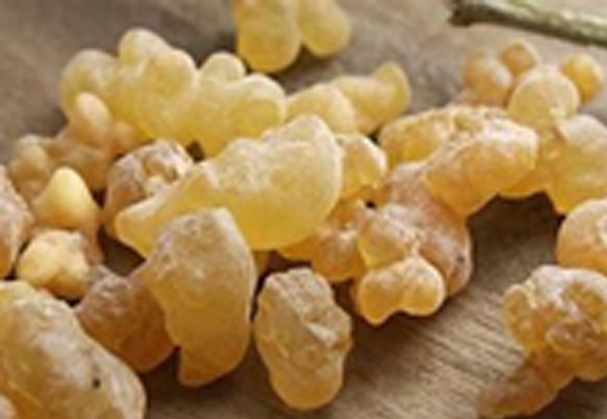
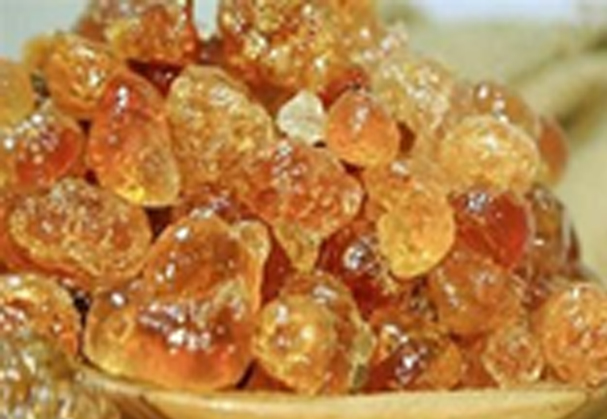
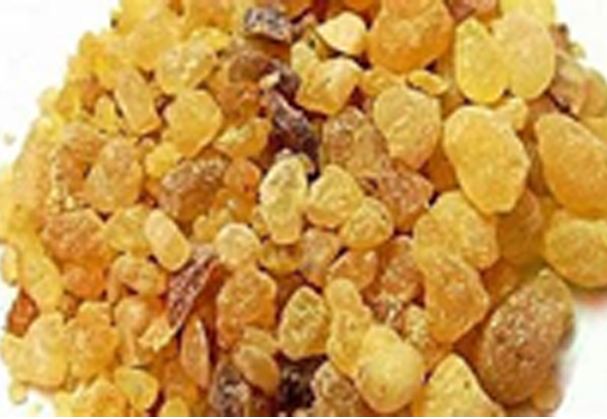
Boswellia sacra
Burseraceae
Frankincense, Olibanum, (Ar.): al-lubān, (Persian): Kondoor, (Syria): bisma, (Somali): Lubaan
Most Boswellia grows in harsh, arid regions It is native to the Arabian Peninsula ( Oman, Yemen ), and northeastern Africa ( Somalia ). Southern Arabia was an exporter of frankincense in antiquity.
Hardened gum-like material (resin) that comes from the trunk of the tree. The trees start producing resin at about eight to 10 years old. Tapping is done two to three times a year with the final taps producing the best tears.
It is a small deciduous tree, which reaches a height of 2 to 8 m, with one or more trunks. Its bark has the texture of paper and can be removed easily. It has compound leaves and an odd number of leaflets, which grow opposite to one another along its branches. Its tiny flowers, a yellowish white, are gathered in axillary clusters composed of five petals, ten stamens and a cup with five teeth. The fruit is a capsule about 1 cm long.
These are some of the chemical compounds present in frankincense:
• acid resin (6%), soluble in alcohol and having the formula C20H32O4
• gum (similar to gum arabic) 30–36%
• 3-acetyl-beta-boswellic acid
• alpha-boswellic acid
• incensole acetate, C21H34O3
• phellandrene
Generally speaking, the more opaque resins are the best quality. It is commonly used as a fragrance in soaps, lotions, and perfumes.
More studies should be done to confirm these results:
- May reduce arthritis: Frankincense’s anti-inflammatory effects may help reduce symptoms of osteoarthritis and possibly rheumatoid arthritis.
- May improve gut function: Frankincense may help relieve asthma symptoms and reduce the amount of asthma medication needed.
- Improves asthma: Frankincense may help relieve asthma symptoms and reduce the amount of asthma medication needed.
- Maintains oral health: Frankincense extract may help fight gum disease and maintain oral health.
- May have anticancer properties: Compounds in frankincense may help kill cancer cells and prevent tumors from spreading.
When applied to the skin: Frankincense essential oil or gum extract is possibly safe. It might cause skin irritation in some people; When inhaled: Frankincense essential oil is possibly safe. There isn’t enough reliable information to know what the side effects might be.
Specification Data Sheet:
This Sudanese standard is formulated by the technical committee No.4 formed according to the administrative decree of the SSM0/1/A/I dated 18/8/01. It applies to Frankincense.
On formulating this standard the committee has referred to international publications and works of Sudanese researchers on the subject.


